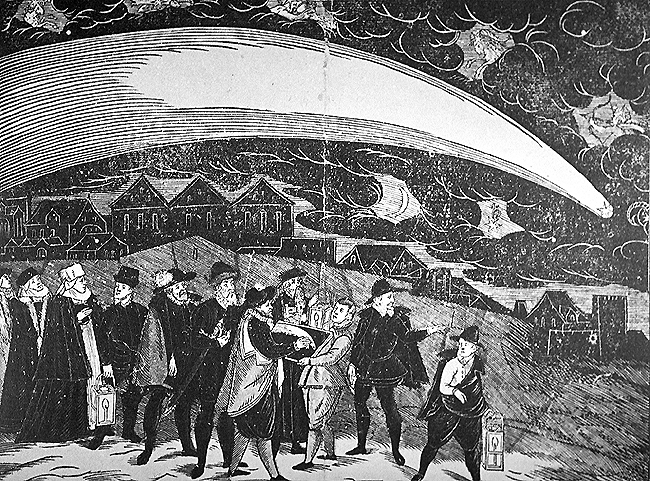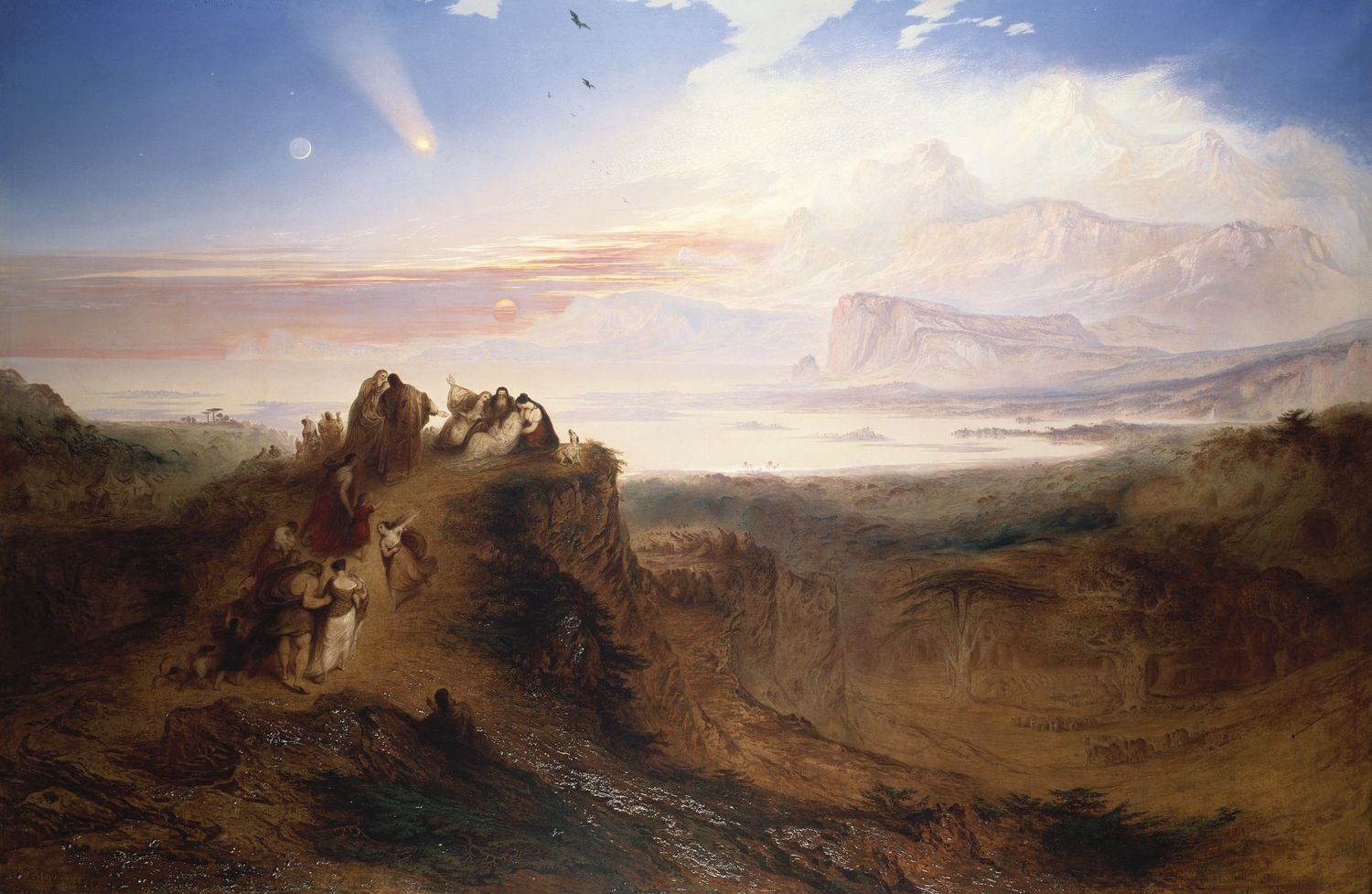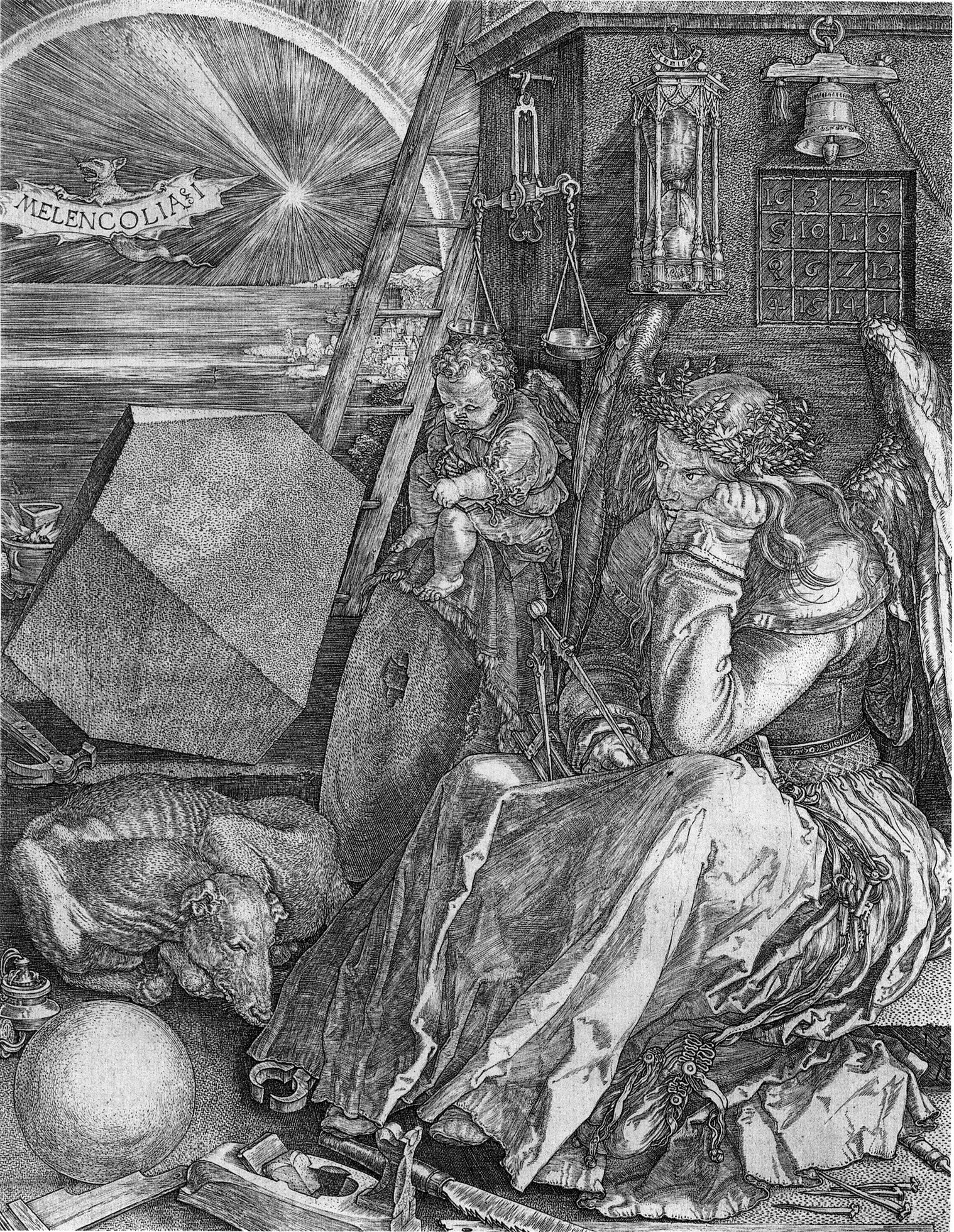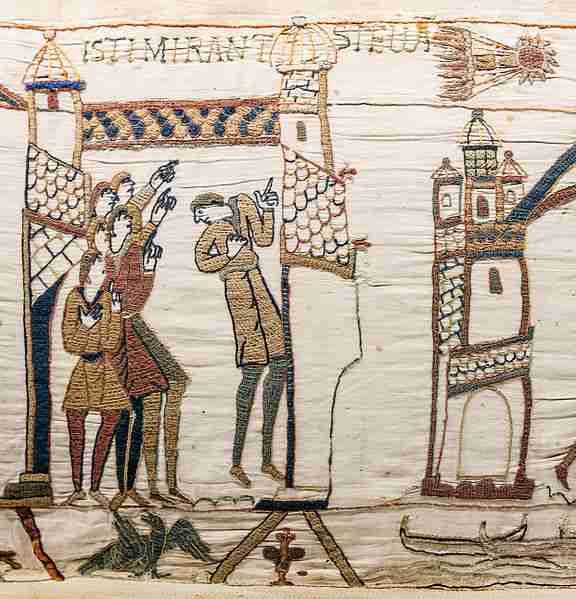A similar symbolic dimension is found in many works. A treatise of Babylonian astrology of the late first millennium BC already devoted a tablet to the “bibbu,” the wandering stars — comets, planets and shooting stars that move in the sky. Sometimes spectacular, always unexpected, the comet was necessarily an omen. It was a sign, positive or negative according to the purpose of the work, that reinforced the message or the meaning it intended to convey.
As a good omen, the star of the Nativity, which accompanies the Adoration of the Magi (ca. 1305) by Giotto di Bondone (ca. 1266-1337), took the form of a comet, harbinger of a great event. Conversely, a comet or a set of shooting stars could be a bad omen, as in the Arrest of Christ (1325-1330) by Pietro Lorenzetti (ca. 1280-ca. 1348).

L’Adoration des Mages, fresque peinte par Giotto (ca. 1266-1337) sur les murs de la chapelle Scrovegni (Padoue, Italie) vers 1305. L’astre qui est censé avoir guidé les mages est représenté sous la forme d’une comète, probablement en souvenir du passage de la comète de Halley en 1301. C’est à partir de cette représentation qu’a été baptisée la sonde Giotto.
Crédit : DRThe impact of comets is such that some artists seem to use religious, mythological or historical scenes to represent their apparition. Thus, Domenicus van Wijnen (1661-after 1690) depicted in his Metamorphosis of Eson the comet Ikeya-Zhang observed that year and mentioned in particular by the Polish astronomer Hevelius.
The engraver Jiri Daschitzky placed the great comet of 1577 over the city of Prague: it occupied not only the whole sky but it also gave its shape to the pen that holds the central character, consigning perhaps his observation.

La grande comète de 1577 - gravure de Jiri Daschitzky
Crédit : Zentralbibliothek ZürichMore ambiguous was the comet in the famous engraving of Albrecht Dürer (1471-1528), Melencolia I, dated 1514. Many commentators have considered it as a “dark satellite,” contributing to the apocalyptic dimension of the work because the comet is a celestial phenomenon heralding the end times or death. Others only see here the representation of a comet that Dürer actually observed in February 1514 and that he mentioned in his notes.
The apocalyptic symbolism of the comet associated it with the Deluge that it would have preceded and announced, although the Bible says nothing about it. One example is the picture by John Martin (1789-1854), The Eve of the Deluge (1840). This association lasted until the 20th century, witness the Apokalyptische Landschaft (1912-1913) by Ludwig Meidner (1884-1966).

The eve of the deluge - peinture de John Martin, 1840
Crédit : Royal Collection Trust/© Her Majesty Queen Elizabeth II 2014

Melencolia I, Gravure de Dürer
It is precisely this apocalyptic dimension that would please cartoonists in the 19th century. For example, Honoré Daumier (1808-1879) in Le Charivari mocked the return, announced by the astronomer Jacques Babinet, of the Comet of Charles V — this Holy Roman emperor, in 1556, had seen in this comet a confirmation of his desire to abdicate — which ultimately would not come back.
Let us finally mention some contemporary works where the path of the comet and the serial cutting it allows is a source for inspiration. A comet occupies six stained glass windows of the cathedral of Metz, by Marc Chagall (1887-1985). Jan Dibbets, whose work Hommage à Arago is installed at the Paris Observatory and throughout the capital since 1994, designed in 1973 a work entitled Comet, 6-72°, Sky-Land-Sky, which shows a mounting of 12 photographs depicting the tail of a comet. Finally it is with a comet that Jean Cortot chose to illustrate the poem Phenomena of Nature (Paris, Maeght, 1988) by Jean Tardieu in a leporello or accordion, book.
Voir aussi > les comètes dans la littérature (in french)

Vitraux de Chagall dans la cathédrale Saint Etienne de Metz
Crédit : James Lequeux avec l'autorisation du Centre des Monuments Nationaux